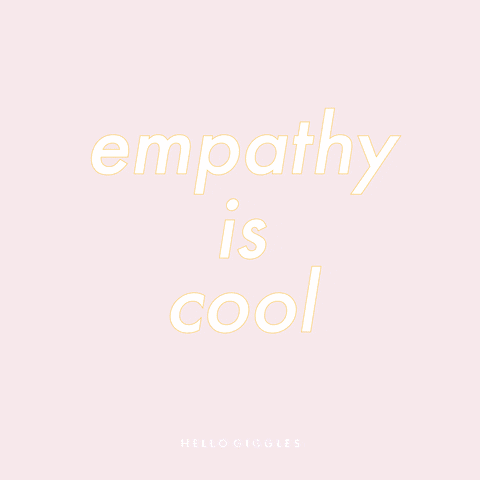Want a heads up when a new story drops? Subscribe here.
Empathetic marketing is about connecting with customers. It’s about getting inside their minds, and understanding their experiences, fears, desires, needs, and hopes. As humans, we all cry, get angry or annoyed, laugh, and love. These feelings arise from an emotional experience. As marketers, it is our job to elicit a response by recreating that experience through empathetic marketing.
Table of Contents
Is Empathetic Marketing Efficient?

When you can put yourself in your customer’s shoes, you are able to understand their buying behavior and find ways to better serve them. Empathy always wins.
Smart marketers embrace this empathetic approach to elicit an emotional response and action. They use emotional cues as subtle as color and abstract images. Even more obvious cues are tone of voice, body movement. Facial expression can indicate sadness, happiness, fear, anger, excitement, or surprise.
These emotional cues can be tailored carefully to engage with customers and encourage them to buy. But there is more. The core of empathetic marketing is understanding customers and helping them make a decision that improves their lives.

There are a number of ways to market your products by evoking emotion. Below are some guiding principles to help you switch to an empathetic mindset and connect with customers on a deeper, more personal level.
Get to Know Your Audience

If you know your audience, you will also know which emotion resonates with your customers’ needs, desires, or pain points. To decide which emotion to elicit, you should do some serious audience research. Think about what your customer perceives.
Answer questions that determine the problems, concerns, fears, and frustrations your clients have. Find out what they need, what’s their environments. Who are their friends? What risks are they ready to take. What is their idea of success, achievement, happiness, and failure?
Knowing the customer’s perception and views will help you to improve their experience.
Tools to Help You Determine How Your Customers Feel

To get a good idea of what your customers feel, you can use tools such as netnography, focus groups, surveys, and social listening.
Netnography, for example, analyzes the customer’s free behavior as opposed to interviews and surveys. This type of research offers valuable insights into your customers’ hobbies, influences, goals, concerns, and pain points. In essence, it is a tool to study virtual communities through observation and social network analysis.
Think of a hotel business that wants to appeal to couples with young children. There are many groups on Facebook and other social media where parents discuss traveling with kids and infants, bottle feeding while traveling, sleeping arrangements, choosing a vacation destination, etc. If the hotel wants to understand how to better serve couples with children, assessing discussions in such groups can be very helpful.
How to Navigate Empathetic Marketing

Be Authentic
For brands being authentic means that they are genuine, sincere, and real. Customers are quick to abandon brands that are trying to be something they are not. When brands are genuine, people do their marketing for them through shares, likes, and word of mouth.
Essentially, authenticity marketing is about the stories you tell. Share the hardships your team has overcome, the challenges you face, and the driving force behind your business.
Let Customers Know Why You Exist
What you stand for is your brand purpose and values, not the product you market. When you think of Nike, it is athletic excellence that remains at the forefront of what it stands for, not sports gear and sneakers.

W Hotels stand for extraordinary travel experience and style, people don’t just go there to eat and sleep.

Disney stands for happiness and magic and not theme parks, resorts, and movies.

This is the essence of your brand. Many businesses say their core values are respect, accountability, trust, honesty, loyalty, or simplicity. But if you randomly choose values, they will not reflect who you truly are or relate back to what your company does.
Think about what matters the most when launching a new product, speaking to a customer, or hiring. Is it innovation or convenience? What about responsibility and accountability? Are respect, communication, and teamwork essential?
Whatever it is that you value, embrace it so that customers see the authentic you.
Engage with Customers through Empathetic Marketing

More and more people utilize anti-spam software and ad-blocks to filter non-genuine messages. Building a genuine connection means speaking and listening to customers.
Pay close attention to their needs, concerns, and pain points and make them feel like they are your only customer. When people don’t feel valued, they will take their business elsewhere.
Everyone wants to feel understood and special and luckily, there are plenty of ways to engage with customers and make them feel valued. You can retweet their tweets, participate in conversations, and respond to comments on social media and your blog. Make sure you respond to questions, inquiries, and requests promptly and thank them for doing business with you.
Tell Your Customers’ Stories Using Empathetic Marketing

Nowadays customer success stories, case studies, and testimonials are ubiquitous. Brands showcase testimonials and videos to show how much better off customers are after using their service or product.
So why bother investing in customer stories?
When your prospects see their own struggles and concerns in those you have helped, they will be eager to learn more about you and your products.
Use Empathetic Language

Like most of us, brands tend to use the verb “should” a lot. We use it to express emotions like remorse, shame, and frustration, to hold ourselves in check, and to make others do something.
But as author and coach Hannah Braime explain, when you tell others they should do something, you are not “respecting their ability to make the best decisions for themselves” (Huffpost). The words “must” and “should” are unnegotiable and take away people’s sense of autonomy, freedom, and choice.
“I must be on time for that meeting”
“I should start eating healthy”
“We should go to the park tomorrow”
We tend to overuse “must” and “should” in our daily lives. But behind this pattern, there are often unrealistic demands and expectations that can lead us to feelings of failure, frustration, anger, or disappointment.
When there is no gray area and only black and white, there is no room for discussion, active listening, and negotiating. “Must” and “should” put people under a lot of pressure to act instead of focus on what they really want.
So instead of “I should start eating healthy”, a more empathetic statement could be “My goal is to eat healthy as much as possible”. Instead of “I must be on time for that meeting”, a kinder statement could be “I want to be on time for that meeting”.
Find Out Who Your Customers Truly Are

The idea of what we should or shouldn’t do comes from a societal belief about the right and wrong way of doing things and the perfect person we should all aspire to be.
The perfect person and life simply don’t exist, yet we see them on the front of every social media page, TV program, ad, and magazine cover.
People behave, look, and feel a certain way. They never waste their days binge-watching sitcoms or doing anything. They always have a neat appearance and never have a hair out of place. And they rarely look totally lost or confused and lacking direction in life.
Marketers often fall into this linguistic trap. “You should go to the gym.” You should be able to quit smoking.” “You should eat healthy all the time.” Instead of “You should go to the gym”, a more effective way of saying this would be “Exercise makes you feel more energetic and healthier”.
Instead of focusing on urgency and using statements like “Download this eBook now” or “Buy now”, use language that highlights the benefits of what you are offering. Empathetic messages speak to the suffering of customers and show how buying the product solves a problem they have.
Tip: Hundreds of growing businesses use Socialfix to incorporate empathy into their marketing strategy, create messages with impact, and showcase their products.
Why Use Empathy Marketing?
Customers are bombarded with messages and already experience marketing oversaturation. A study by WARC and GWI shows that 52% of U.S. customers feel that overexposure to ads can negatively affect their perception of a brand or company. Participants share that they see website ads as intrusive (27 %), distracting (31 %), and excessive (32 %). According to the study, the pandemic also contributes to ad fatigue because people spend more time online.
Customers are inundated with ads and deem advertising excessive, whether on social media or TV. They have learned to filter ads they can’t relate to. Marketing with authenticity puts brands a cut ahead of the competition and makes them stand out to their target audiences.
As people are increasingly digital creatures, they can easily see through sales pitches and marketing schemes. Authenticity marketing is about being honest and valuing customers and their time. And empathy is more important than data in marketing.
Empathetic Marketing Helps You Gain Understanding of Your Customers

While data is a vital asset in connecting with audiences, it doesn’t always lead to genuine connections. Understanding your customers and acknowledging their feelings and difficulties does that. Incorporating empathy into your marketing strategy will help you to gain an understanding of your customers and the feelings, concerns, and challenges they have.
In marketing, empathy is the ability to have genuine and meaningful interactions and show as much compassion as possible.
Empathetic Marketing Helps You Manage Expectations

As we are exiting Covid-19 lockdown and social distancing measures, customers increasingly expect engagement and understanding from brands. While they are gradually returning to normalcy and a calmer mindset, there is still a lot of fear, uncertainty, anxiety, and frustration.
Many feel helpless about the current situation and how this will end. How well do vaccines work? Should I book a summer vacation abroad? Will I still have a job next month? When can schools reopen safely? The pandemic is a once-in-a-lifetime economic and health disaster that feels like dragging down indefinitely.
Living in a limbo, we all have a list of unanswered questions about what the future holds. Using empathetic marketing in your digital strategy will help you navigate your client’s expectations and answer their needs.
In Summary

So, empathy has never been more important in marketing. People need that additional support and understanding as they struggle to cope with life challenges during an ongoing pandemic. Customers want to feel heard and understood as they are trying to adjust to a reality of uncertainty.
Brands that fail to understand the emotional state and concerns of customers are unlikely to connect with them during a crisis. In the current climate of uncertainty and fear, companies that solve practical problems and add meaning to their interaction with customers will be able to build long-lasting relationships and recover faster from the pandemic than brands that don’t utilize empathetic marketing techniques.
















